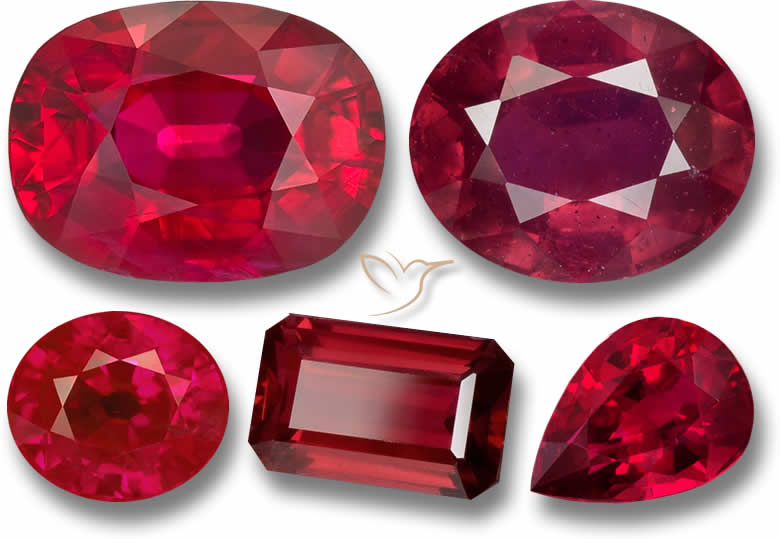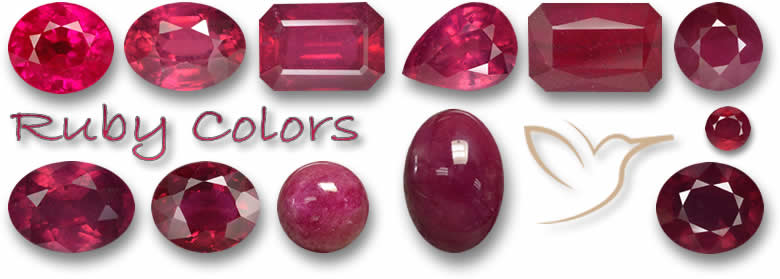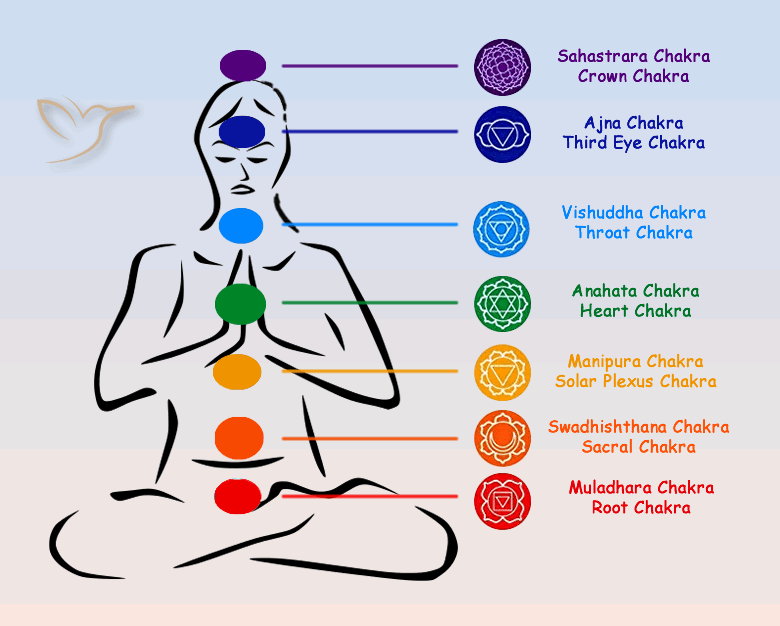Ruby Gemstone Information

Introduction
Amongst colored gemstones, who stands out as the leader? We have three top contenders: in the green corner, the elegant emerald; in the blue corner, the sophisticated sapphire; and in the red corner, the powerful ruby.
Let's explore rubies, the gemstone ancient Indians referred to as 'Ratnaraj', which means king of precious stones in Sanskrit. You've probably heard the start of that old rhyme, 'rubies are red...' and red has been a cherished color throughout human history. From ancient cave paintings to the garments of Greek and Roman elites, brides in India and China, red carpets, sports cars, national flags, business ties, winning teams' jerseys, London's iconic phone booths, buses, and postboxes - we can't get enough of red.
Rubies perfectly capture that vibrant red essence. When we think of ruby, red comes to mind, and red evokes passion, power, romance, excitement, and energy.
Ruby Colors

We know rubies are red, but what makes one red better than another?
To evaluate ruby color, we break it down into hue, tone, and saturation. Hue refers to how purely red the stone is - without hints of yellow, blue, or brown. The more purely red, the higher the value.
Tone describes how light or dark the gem appears. Ideally, it's balanced: not so dark that it hides the red, but not so light that it looks pink. There's ongoing debate among experts about when a light-toned ruby becomes a pink sapphire - often depending on the context of the sale!
Saturation measures the intensity of the color. We want vivid, strong reds, not washed-out ones. The ideal ruby color is often called "pigeon blood red," typically from Myanmar (Burma). It's a vivid, slightly purplish red that stands out.

Some rubies exhibit fluorescence, glowing under ultraviolet light or even sunlight, adding to their appeal.
Color charts for rubies exist, with ratings like AA or terms such as pigeon blood, but they're guidelines - seeing the stone in person is key.
Ruby Varieties
Rubies belong to the corundum family, a crystalline aluminum oxide. Sapphires are the same material, but rubies get their red from chromium impurities, while sapphires turn blue (or other colors) from titanium or iron.
Rubies vary mainly by their shades of red and ruby sources from various countries, which influence quality and reputation.
Burmese or Myanmar rubies are top-rated for their vibrant reds and fewer inclusions.
Thai rubies rank just behind, known for darker, burgundy-tinted hues and excellent quality.

Madagascan rubies are newer to the market, often with orange or pink undertones.

Tanzanian rubies offer clean, affordable stones, though typically smaller.

Mozambique produces many rubies, including notable star ruby gemstone varieties from the north.

Related composite materials include ruby in zoisite gem information and ruby in fuchsite details.
Ruby Meaning
Rubies have been revered since ancient times, carrying strong spiritual meaning powers and uses. They are said to instill power, confidence, and vitality, helping wearers embrace life's opportunities fully.
As a symbol of love and passion, rubies are linked to romance, desire, and energy. They're believed to sharpen focus for key moments and offer protection from negative forces or bad dreams.
Legends claim rubies could ward off illness, signal danger, or even boil water. Warriors wore them for invincibility - some in Burma embedded them under their skin!

Linked to the root chakra for stability and prosperity, rubies encourage positive affirmations like "I am secure" or "I love life." Their red hue also connects to the heart chakra.
Ruby is July's birthstone and suits Cancer zodiac signs, helping them overcome doubts.
Disclaimer: The information provided about the spiritual properties of rubies is for informational purposes only and is not intended as professional advice. Individual experiences may vary.
Health Benefits of Ruby
Red stones like rubies are associated with blood flow, heart strength, and circulation. As a root chakra stone, they're linked to digestive health, lower back, and reproductive issues.
To use gemstones for potential benefits, wear them as jewelry - perhaps a pendant for chakra alignment. Carry them as touchstones, meditate with them, or place them in your home for focus or relaxation. Always check if the stone is water-safe for baths.
Disclaimer: The information provided about the healing properties of rubies is for informational purposes only and is not intended as medical advice. Consult a healthcare professional for any health concerns.
Ruby Clarity
Flawless rubies are rare, especially in larger sizes, so some inclusions are normal. Value drops if inclusions are eye-visible or reduce brilliance.
Surface-reaching cracks harm durability, but certain inclusions - like rutile needles - can create admired star effects or enhance color.
Clarity grades like VVS exist, but transparency matters too: clear stones let light pass through sharply.
In short, better clarity means higher price, but color remains king.
Ruby Price
Ruby Price List |
||
| Color | Weight range | Price range / USD |
|---|---|---|
| Ruby Fracture filled | 1ct + | $15 - $80/ct |
| Ruby Heat only | 1ct + | $250 - $10,000/ct |
| Ruby Untreated | 1ct + | $2,000 - $20,000/ct |
Pricing uses the 4Cs: color (most important), clarity, cut, and carat. Vivid, even red boosts value; clouds or cracks lower it.
Cutters minimize waste, favoring ovals or rounds for sparkle. Rubies are pleochroic, showing different colors by angle - cutters prioritize red.
Larger rubies (over 1 carat) are rare, so prices rise exponentially. Treatments affect cost: untreated gems command premiums, while filled ones are affordable.
How Much is a 1 Carat Ruby?
Carat equals 0.2 grams, from carob seeds used as ancient weights. For a top Burmese ruby, prices range from $2,000 to $20,000 - or more for exceptional pieces. Recent sales hit $1.2 million per carat for larger stones.
Buy by millimeter size, not just carat, since ruby density differs from diamonds or emeralds.
Are Rubies More Expensive Than Diamonds?

Rubies are rarer than diamonds, but controlled diamond supply keeps prices similar - up to $10,000 per carat. Large rubies can exceed diamonds, though colored diamonds are pricier still.
Ruby Discovery and Formation
"Ruby" derives from Latin for red, mentioned in ancient texts like the Bible and Vedic writings. Many red stones were once called rubies before modern analysis.
Rubies form from corundum under extreme heat and pressure, cooling into crystals. Chromium traces create red; other elements make sapphires.
Greenland rubies, ethically mined from hard rock, resemble Myanmar ones and show promise.
Are Rubies Treated?
All gems are cut and polished, but rubies often get more. Untreated salable rubies are just 1% of the market - without treatments, they'd be ultra-rare.
Heat treatment, ancient and accepted, improves clarity and color without additives. Modern ovens replicate traditional methods.
Flux-enhanced heating adds materials to fill fractures, reducing value. Glass-filling or fracture-filled ruby treatments bleaches and fills cracks for affordable, clear stones.

Always disclose treatments for transparency.
What Jewelry is Ruby Suitable For?

With a 9 on Mohs scale, rubies match sapphires for durability - ideal for daily wear, rivaling diamonds (10).
Any shape works; ovals and cushions are common. Pair with white gold for modern looks, yellow or rose for vintage. Smaller sizes suit minimalist settings.
Did You Know? Interesting Facts About Ruby
- Ruby marks 15th and 40th anniversaries - perfect for showing lasting love. It's also July's birthstone.
- Chromium gives color but makes large stones brittle and rare.
- "Corundum" traces to a Tamil word for ruby.
- Rubies top the original four precious gems in price potential.
- The 8,500-carat Liberty Bell ruby was stolen in 2011 and remains missing.
- Elizabeth Taylor's 8-carat ruby ring sold for $4.2 million in 2011.
- Britain's crown jewels have thousands of diamonds but only five rubies.
- The Black Prince Ruby in the crown jewels is actually a spinel.
- China holds the world's largest ruby at over 40,000 carats.
- Lab-grown rubies took decades; Verneuil succeeded in hours.
- The first laser used ruby's fluorescence.
- Himalayan formation ties to India's collision with Asia, tracing top mining sites.
- The historic Timur Ruby gemstone is a notable engraved spinel from the Mughal era.
- The Carmen Lucia Ruby in the Smithsonian is one of the finest Burmese rubies on display.
How to Care for Rubies
Store rubies separately to avoid scratching softer gems. Use fabric-lined boxes or bags.
Remove jewelry for activities like cleaning or sports. Clean with warm soapy water and a soft brush.
Avoid ultrasonics if treated; skip steam cleaners. Professional cleanings are wise for valuables.
How Do You Know If You Have a Real Ruby?

Buy certified from reputable dealers with returns. Check for inclusions - flawless stones may be synthetic.
Rubies don't scratch easily; test carefully. Streaks on surfaces indicate dyes or fakes.
Low prices signal issues. Labs like AIGS or BGL offer reports.
What is So Special About a Ruby?
As one of the original precious gems, rubies represent rarity and beauty - formed over eons, then crafted into fiery treasures.
Can Ruby Change Color?
Unlike alexandrite or some garnets, rubies don't dramatically shift colors. Lighting can subtly alter appearance, but not like true color-change gems.
How Can You Tell a Good Quality Ruby?
Trust dealers with returns. Evaluate 4Cs, sources, treatments. Ultimately, if it fits your needs and looks right, it's a winner.
Ruby - Gemological Properties
| Chemical Formula: | Al2O3, Aluminum oxide |
| Crystal Structure: | Trigonal, hexagonal prisms or tables, rhombohedrons |
| Color: | Various reds |
| Hardness: | 9 on the Mohs scale |
| Refractive Index: | 1.762 - 1.778 |
| Density: | 3.97 - 4.05 |
| Cleavage: | None |
| Transparency: | Transparent to opaque |
| Double Refraction or Birefringence: | -0.008 |
| Luster: | Vitreous to silky |
| Fluorescence: | Strong: carmine red |
Frequently Asked Questions
What is a ruby?
A ruby gemstone is a red variety of corundum, colored by chromium, known for its hardness and rarity.
What is the best color for a ruby?
The ideal is "pigeon blood red" - a vivid, pure red with strong saturation and balanced tone.
Are rubies treated?
Yes, most are heat-treated to enhance color and clarity; some are fracture-filled for affordability.
How do I care for my ruby?
Clean with warm soapy water, store separately, and avoid harsh activities or cleaners.
Are rubies rarer than diamonds?
Yes, but prices are similar due to diamond market controls; large rubies can be pricier.
How can I tell if my ruby is real?
Look for inclusions, test hardness, and get a lab certification from a trusted source.

